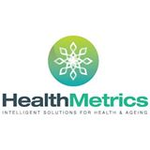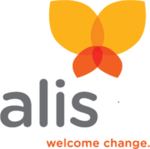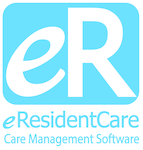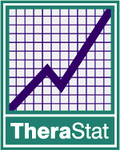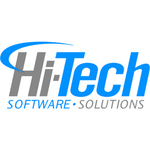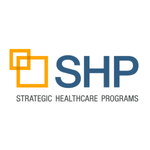What Is Long Term Care Software?
Long term care software is a specialized application that simplifies and improves the management of long-term care institutions and services. It is a comprehensive software solution that incorporates a variety of features and functionalities unique to the long-term care market, making it an asset for both large and small facilities. One of the key goals of long-term care software is to automate and optimize administrative operations including scheduling, invoicing, and recordkeeping.
This not only decreases staff workload, but also reduces human mistake and ensures data accuracy. Long term care software also includes capabilities to help with resident care, such as electronic health records, prescription administration, and care plans. These tools allow staff to conveniently access and track resident information, ensuring that they receive high-quality care.
Another major feature of long-term care software is its capacity to enhance communication and collaboration inside a facility. Staff can quickly interact and organize care for residents using tools such as messaging and shared calendars, resulting in a more efficient and effective workflow. Furthermore, long-term care software has reporting and analytics features that enable facility administrators to make informed decisions about operations and resident care. This includes measuring financial performance, occupancy rates, and satisfaction surveys, which provide useful information for future planning.
What Are The Recent Trends In Long Term Care Software?
The need for long-term care software has increased in recent years, and with an aging population, this trend is projected to continue. As technology advances, the long-term care industry has witnessed various software innovations that aid in efficiency, accuracy, and patient care.
We will go over the latest trends in long-term care software that you should be aware of before making a purchase decision.
1. Implementation Of Electronic Health Records (EHRs): One of the most significant trends in long-term care software is the use of electronic health records. EHRs enable healthcare providers to securely store and access patient information, treatment plans, medication records, and other data in digital format. This not only decreases the likelihood of errors and missing documents, but it also enhances communication and collaboration among healthcare providers.
2. Integration Of Artificial Intelligence (AI): Another trend gaining pace in the long-term care market is the incorporation of artificial intelligence (AI) into software. AI-powered systems can analyze vast amounts of data, detect patterns, and deliver vital insights to healthcare providers. This can aid in the early detection of health problems and improve decision-making for improved patient outcomes.
3. Cloud-Based Solutions: Because of their low cost, accessibility, and scalability, cloud-based software solutions are gaining popularity in the long-term care sector. These technologies enable healthcare facilities to store, manage, and retrieve data from anywhere, allowing for improved coordination between departments and locations.
4. Mobile Applications: Many long-term care software vendors now provide mobile applications that enable caregivers and healthcare professionals to access patient information, schedules, and other critical data via cellphones or tablets. This allows them to give better care to patients and stay connected while on the go.
5. Prioritize Data Security: As cyber risks have increased, long-term care facilities have made data security a primary focus. As a result, many software suppliers are implementing advanced security features like encryption and firewalls to safeguard sensitive patient data.
Benefits Of Using Long Term Care Software
Long term care software is a strong tool that can help both individuals getting long-term care and healthcare professionals who provide it. With an aging population and rising demand for long-term care services, hospitals and organizations must invest in long-term care software.
These are the primary benefits of implementing long-term care software.
1. Streamlined Workflow: One of the primary benefits of long-term care software is its capacity to simplify and automate many administrative processes. The program, which includes electronic health records, scheduling, and invoicing, can greatly cut the time and effort required to complete paperwork. This results in increased efficiency, allowing healthcare personnel to concentrate more on providing quality care to patients.
2. Better Communication And Coordination: Long-term care software also enables better communication and coordination among healthcare teams. A unified platform allows all team members to readily access and update patient information, reducing the likelihood of miscommunication and errors. This improves teamwork and coordination, leading in better patient outcomes.
3. Comprehensive Patient Information: Long-term care software provides a full view of a patient's medical history, treatment plans, prescription schedules, and other critical information. This not only allows healthcare providers to make informed judgments, but it also provides a complete picture of a patient's health. It also enables for more accurate tracking and monitoring of patient progress, resulting in prompt and appropriate treatments.
4. Cost Savings: Implementing long-term care software can result in significant cost reductions for facilities and organizations. By automating tasks and eliminating paperwork, the program can save time and money. It also decreases the likelihood of errors, avoiding costly reworks or legal action. The software can also assist facilities enhance their revenue cycle management by providing capabilities such as automatic invoicing and claims submission.
5. Compliance & Security: Long-term care software is intended to comply with industry rules while maintaining data security. With features such as HIPAA compliance, regular data backups, and user permissions, the software assists hospitals in remaining compliant and protecting sensitive patient information. This not only assures data security, but also fosters trust and reliability among patients and their families.
Important Factors To Consider While Purchasing Long Term Care Software?
When it comes to selecting long-term care software, there are numerous crucial elements to consider in order to make an educated purchase.
By taking these aspects into account, purchasers may ensure that they select the finest software for their unique requirements and budget.
1. Operational Needs: The first step in selecting long-term care software is to determine your operating requirements. Consider the size and nature of your facility, the number of inhabitants, and the specific duties and operations that the program must manage. This will assist you in determining the necessary features and functionality for your facility.
2. User-Friendly Interface: A user-friendly interface is critical for any product, particularly in the healthcare business. Look for software with a basic and intuitive layout, as well as easily navigable features and functions. This will help to reduce the learning curve and ensure that employees can quickly become accustomed to using the program.
3. Cost: The cost of long term care software might vary substantially, therefore it's critical to set a budget ahead. Keep in mind that the price may include monthly or annual membership fees, installation fees, and support and maintenance charges. When comparing pricing, make sure to take into account all of these elements.
4. Integration Capabilities: Long-term care software should be compatible with other systems and software currently in use at your facility. This saves time and effort on data entry while also ensuring that information is accurate and up to date across all platforms.
5. Customization Options: Every facility has distinct needs and operations, therefore the flexibility to tailor the software to meet those requirements is critical. Look for software with various customization options, so you may adjust it to your individual needs.
6. Training And Support: Adequate training and support are required for the successful adoption and usage of long-term care software. Look for a provider who provides full staff training as well as continuing technical assistance to guarantee that any difficulties or inquiries are answered promptly and efficiently.
7. Security: In the healthcare industry, security is of paramount importance. Make sure the software you select has strong security safeguards in place to secure sensitive resident and facility data. This could include data encryption, user authentication, and scheduled backups.
8. Reputation And Reviews: Conduct research and seek evaluations and feedback from other facilities that have utilized the software you are considering. This will offer you a greater grasp of its strengths and disadvantages, allowing you to make an informed choice. Buyers may ensure that the long term care software they select fulfills their operational goals, budget, and security requirements by taking these crucial elements into account. It is critical to carefully assess and compare several possibilities before making a final decision to ensure that the software will be a useful and efficient tool for the facility.
What Are The Key Features To Look For In Long Term Care Software?
Long term care software is an essential tool for healthcare facilities that specialize in providing care and support to the elderly or people with chronic disabilities. It not only helps to streamline administrative work, but it also enhances overall patient care. However, not all long-term care software solutions are made equal, and it is critical to understand the major aspects to consider before making a purchase.
Here are some key aspects to consider while selecting long-term care software.
1. Electronic Health Records (EHR): EHR is the foundation of all long-term care software. It enables healthcare providers to access and update patient records electronically, removing the need for paper records. Look for software that provides configurable EHR templates for long-term care, such as prescriptions, assessments, care plans, and progress notes.
2. Care Planning And Coordination: Long-term care software should include comprehensive care planning and coordination tools to assist healthcare providers in developing personalized care plans based on specific patient needs. It should also be able to assign particular tasks to individual team members and track their progress. This feature increases productivity and guarantees that all patients receive tailored care.
3. Medication Management: Managing drugs for several patients can be challenging, but with the correct software, it becomes lot easier. Look for software that includes electronic medication administration records (eMAR), automatic reminders for missed medications, and the ability to track medication compliance.
4. Billing And Invoicing: A comprehensive long-term care software should have billing and invoicing functions specific to the long-term care context. This includes the ability to create invoices for services rendered, track payments and outstanding balances, and submit claims to insurance carriers electronically.
5. Staff And Shift Management: Managing employee schedules and shifts can be difficult, particularly in long-term care institutions with several departments and shifts. Look for shift management software that allows you to create timetables, switch shifts, and track employee hours and attendance.
6. Quality Assurance And Reporting: High-quality long-term care software should have tools for tracking key performance indicators, identifying areas for improvement, and creating compliance reports for regulatory authorities. This allows hospitals to maintain high standards of care while remaining in line with industry requirements.
7. Training And Support: Before making a purchase, think about the quality of training and technical support offered by the software provider. Look for software vendors who give comprehensive training and continuous support to guarantee that your staff can effectively use the product.
Why Do Businesses Need Long Term Care Software?
Businesses in the healthcare industry have a unique obligation to deliver high-quality care to their clients, particularly in the long term care setting. As the population ages and the demand for long-term care services grows, businesses must increasingly invest in long-term care software. This type of software is intended to streamline and improve many elements of long-term care management, making it an indispensable tool for organizations in this industry.
First and foremost, long-term care software assists organizations in managing patient care. With capabilities like electronic health records, care planning tools, and prescription management, this software enables businesses to effortlessly track and monitor the care they deliver to their clients. This not only improves overall care quality, but also lowers the risk of errors and guarantees that all necessary care is delivered on time.
In addition to direct patient care, long term care software assists businesses with administrative responsibilities. It has functions like billing and invoicing, financial management, and scheduling. Businesses can save time and resources by automating these operations, allowing them to focus on providing the best possible service to their customers. Furthermore, long term care software allows organizations to access real-time data and analytics.
This data is critical for making sound decisions and identifying areas for improvement in the business. Businesses that can develop reports and measure key performance indicators may constantly improve their operations and give better service to their customers. Another key advantage of long-term care software is its compliance capabilities. With rigorous rules in the healthcare field, businesses must follow a variety of laws and standards.
Long-term care software assists businesses in remaining compliant by ensuring all documentation is accurate and up to date, lowering the chance of costly fines and legal complications. Finally, long-term care software provides a secure way to store and access sensitive client data. Businesses can prevent unwanted access to confidential data by implementing advanced security measures such as data encryption and user access control.
Overall, long term care software is a must-have for healthcare firms. It not only increases the quality of service delivered to clients, but it also assists businesses with administrative work, data analysis, compliance, and information security. Investing in this software is a critical step for firms who want to remain competitive and deliver the best possible service to their customers.
How Much Time Is Required To Implement Long Term Care Software?
The implementation of Long Term Care program varies depending on the program, the organization's size, and the level of customization necessary. On average, the process can take between a few weeks and many months. The first stage in installing Long Term Care Software is usually a thorough examination of the organization's existing procedures and workflows.
This provides a better knowledge of how the software might be adjusted to meet the organization's specific goals and expectations. After the program has been adapted to the organization's requirements, the actual implementation procedure begins. This can include data migration, staff training, and software testing to assure proper functionality.
The amount of time necessary for staff training varies based on the software's complexity and the level of computer literacy among staff members. It is critical to set aside enough time for training to ensure that all employees are comfortable and proficient in utilizing the program. In other circumstances, corporations may decide to adopt the software in stages, beginning with a small set of users and eventually growing to include all employees.
This can help to reduce disruption and provide a more seamless transfer to the new software. Overall, proper planning and adequate implementation time are critical to ensuring a successful and effective transition to Long Term Care Software. It is also critical to have support and assistance from the software vendor throughout the process to handle any problems or concerns that may develop.
What Is The Level Of Customization Available In Long Term Care Software?
When choosing long-term care software, one crucial element to consider is the level of customization offered. This refers to the capacity to customize the software to match the unique needs and workflows of a long-term care facility. The level of flexibility varies substantially across different software alternatives. Some may take a one-size-fits-all approach, but others may allow for a great deal of flexibility and adaptability.
A highly customized software can benefit long-term care institutions by providing a more personalized and efficient experience. This can include altering forms and templates, developing personalized care plans for residents, and incorporating special features or functionalities. Buyers must carefully analyze the level of customisation provided by software to decide whether it meets the demands and goals of their facility.
Speaking with the software supplier and obtaining a demo or trial might also assist you grasp the scope of customization available. Buyers should also examine the quality of support and assistance offered by the software supplier during the customizing process. This can help guarantee that the software is implemented smoothly and successfully within the institution. Finally, the level of customisation offered in long-term care software is critical to ensuring that the software meets the specific goals and objectives of a long-term care facility, making it an important consideration to consider during the purchasing process.
Which Industries Can Benefit The Most From Long Term Care Software?
Long term care software is a powerful tool that can aid a wide range of sectors that provide care to people with long-term health requirements. Long term care software may expedite operations, increase communication, and eventually improve the overall quality of care provided to patients in a variety of settings, including senior living facilities and home health care agencies.
The following industries will gain the most from long-term care software:
1. Senior Living Facilities: Long-term care software can assist senior living facilities in managing resident information, tracking spending, and processing invoicing and payments. It can also help with prescription management, scheduling, and the monitoring of resident care plans.
2. Home Health Care Agencies: Long term care software enables home health care agencies to easily manage patient schedules, document care notes, maintain inventory, and automate billing and invoicing processes.
3. Hospice Care: Long-term care software can help hospice caregivers capture patient information, manage staff schedules, and track services provided to patients, all while assuring regulatory compliance.
4. Rehabilitation Centers: Long-term care software can assist rehabilitation centers streamline their operations and enhance patient results by monitoring therapy sessions and tracking patient progression.
5. Mental Health Facilities: Long-term care software can help mental health facilities manage patient records, therapy plans, and medication schedules. It may also improve communication between healthcare providers and patients' family. 6. Government Agencies: Long term care software can help government agencies automate administrative duties, ensure accurate record-keeping, and improve transparency in care delivery. Examples include Medicaid and Medicare programs.
Conclusion
In conclusion, investing in long-term care software can significantly benefit your institution and increase the quality of care for your people. This sort of software provides a number of features and benefits to fulfill the special demands of long-term care facilities, including streamlining administrative duties, improving communication, and care coordination. When selecting software, you should carefully evaluate your individual needs and goals, as well as aspects like simplicity of use, compatibility with existing systems, and level of customer service.
Additionally, examine the software provider's reputation and track record to ensure a reputable and trustworthy solution. Finally, the correct long-term care software may help your facility run more efficiently, increase resident satisfaction, and result in better overall outcomes. We hope this buyer's guide has provided you with enough information to make an informed decision on the finest software solution for your long-term care facility.

